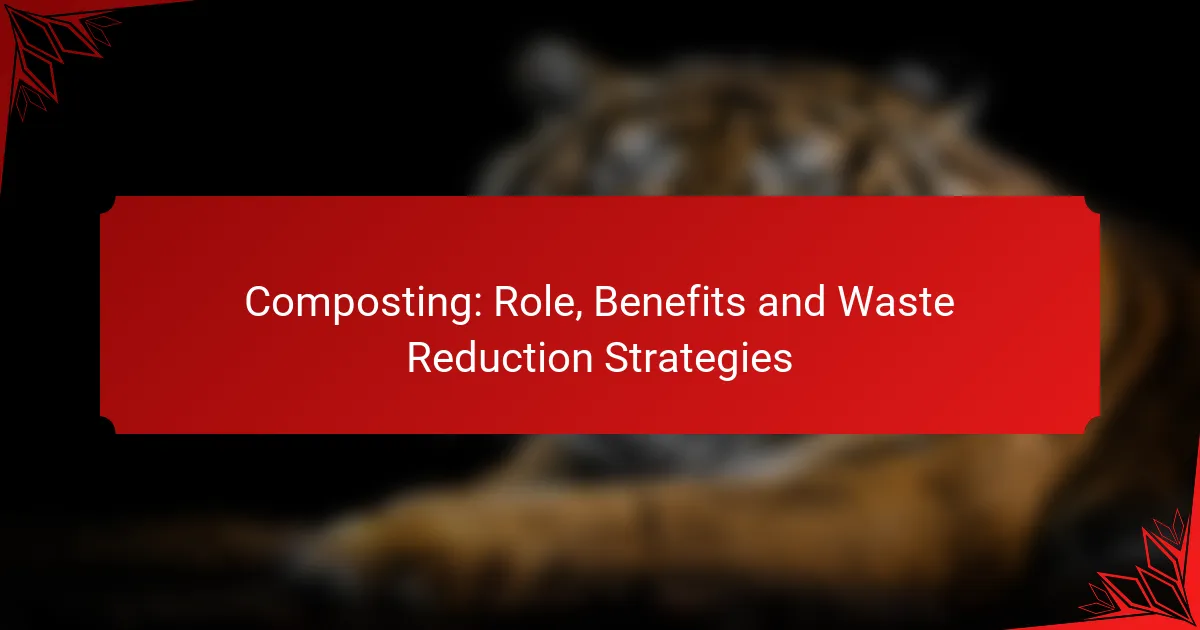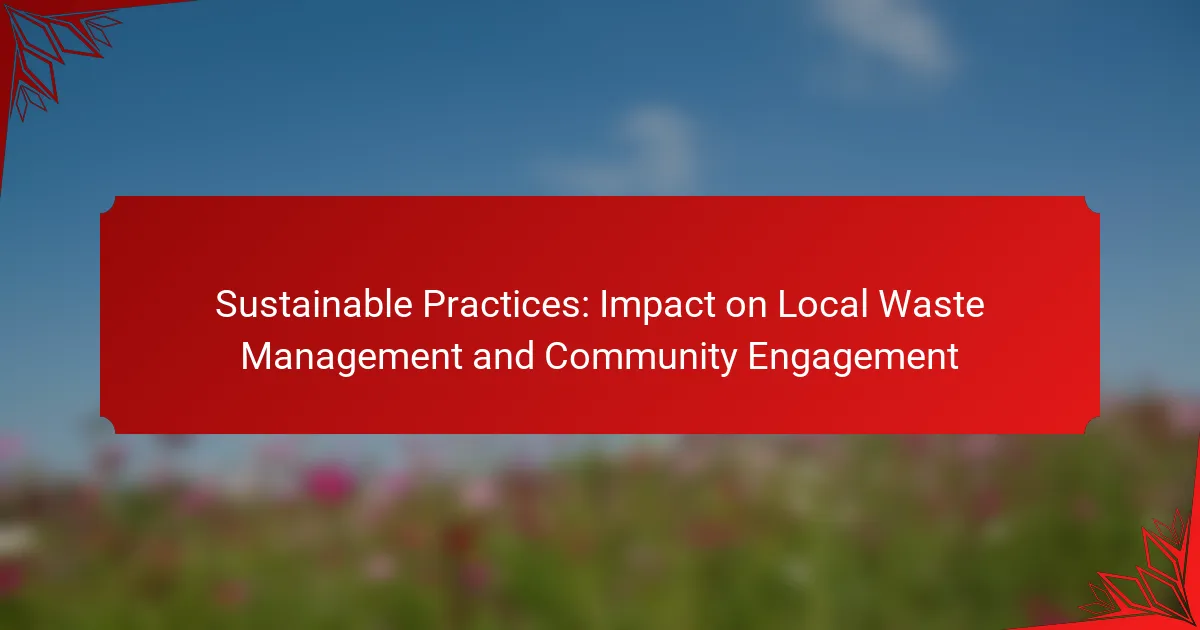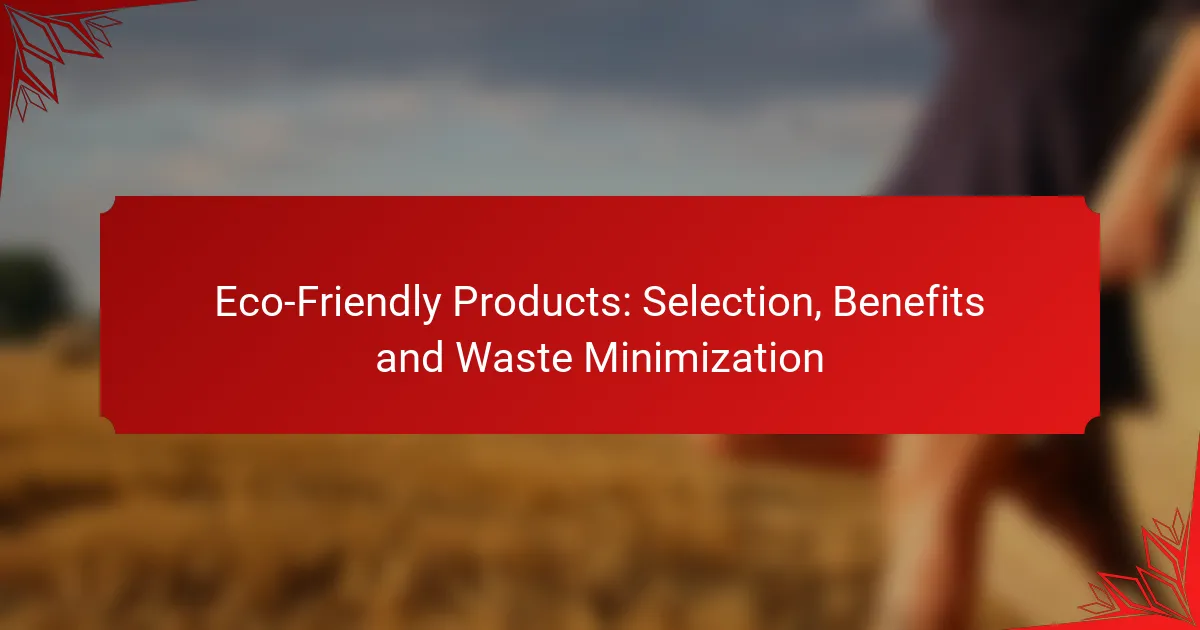Composting plays a vital role in waste reduction by diverting organic materials from landfills, thereby minimizing harmful emissions. This process not only transforms food scraps and yard waste into nutrient-rich compost but also enhances soil quality and supports local ecosystems, promoting a more sustainable environment.
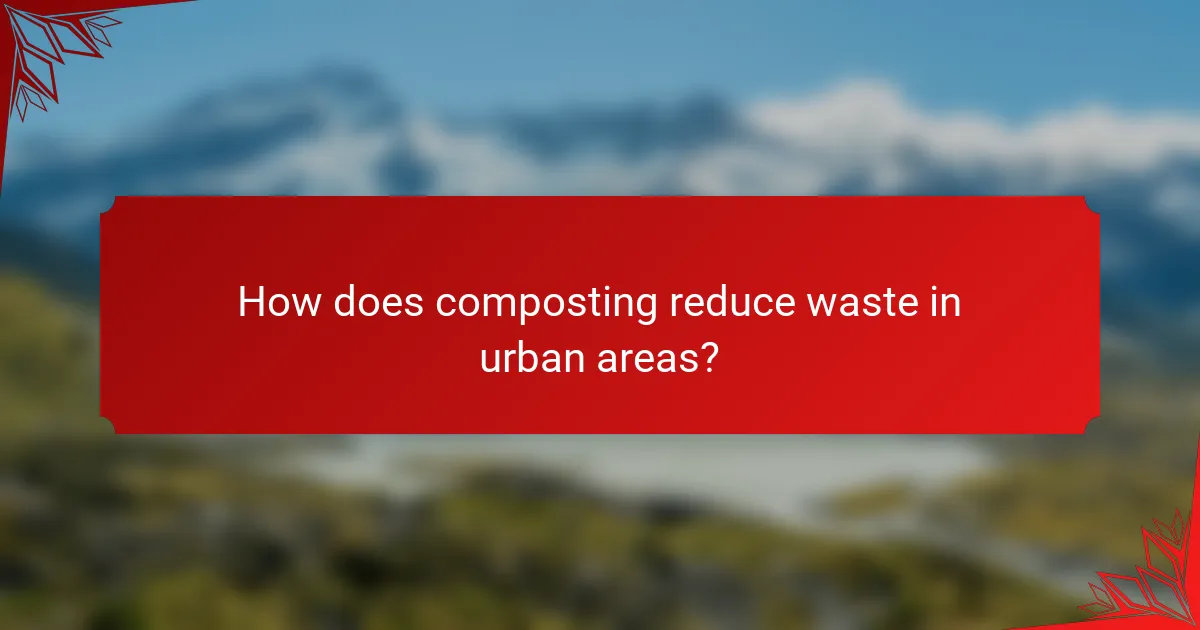
How does composting reduce waste in urban areas?
Composting significantly reduces waste in urban areas by diverting organic materials from landfills, where they would otherwise decompose and produce harmful emissions. By transforming food scraps and yard waste into nutrient-rich compost, cities can enhance sustainability and promote healthier ecosystems.
Reduces landfill contributions
Composting directly decreases the amount of waste sent to landfills by processing organic materials that would typically occupy valuable space. In urban settings, where landfill capacity is limited, composting can reduce waste by a substantial percentage, often around 30-50% of total waste generated. This not only conserves landfill space but also extends the lifespan of existing landfills.
To maximize landfill diversion, residents can set up home composting systems or participate in community composting programs. These initiatives often provide resources and guidance, making it easier for individuals to contribute to waste reduction efforts.
Minimizes greenhouse gas emissions
Composting minimizes greenhouse gas emissions by preventing organic waste from decomposing anaerobically in landfills, a process that produces methane—a potent greenhouse gas. When composted properly, organic materials break down aerobically, significantly reducing the release of harmful gases into the atmosphere.
Urban composting initiatives can further enhance this benefit by educating residents on best practices, such as maintaining proper moisture levels and aeration in compost piles. This ensures efficient decomposition and maximizes the environmental benefits of composting.
Enhances soil health
Composting enhances soil health by enriching it with essential nutrients, improving structure, and increasing moisture retention. The resulting compost can be used in urban gardens, parks, and landscaping, promoting healthier plant growth and reducing the need for chemical fertilizers.
For urban gardeners, incorporating compost into soil can lead to better crop yields and healthier plants. It is recommended to apply compost at a rate of about 1-2 inches on garden beds or mix it into the top few inches of soil to achieve optimal results.
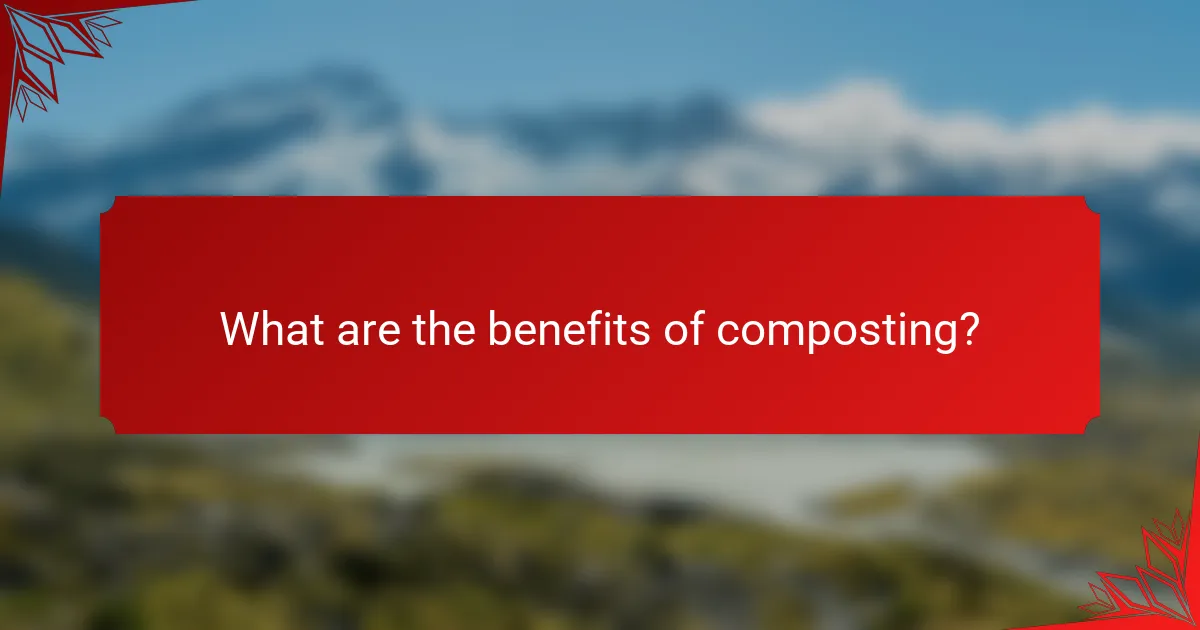
What are the benefits of composting?
Composting offers numerous benefits, including enhancing soil quality, promoting sustainable gardening practices, and supporting local ecosystems. By recycling organic waste, composting reduces landfill contributions and enriches the environment.
Improves soil fertility
Composting significantly improves soil fertility by adding essential nutrients back into the soil. The organic matter in compost enhances soil structure, increases moisture retention, and promotes healthy microbial activity.
To maximize soil fertility, incorporate compost into garden beds or potting mixes at a ratio of about one part compost to three parts soil. This practice can lead to better plant growth and higher yields.
Promotes sustainable gardening
Composting is a cornerstone of sustainable gardening, as it reduces the need for chemical fertilizers and pesticides. By using compost, gardeners can create a natural nutrient cycle that supports plant health without harming the environment.
To practice sustainable gardening, consider setting up a compost bin or pile to recycle kitchen scraps and yard waste. This not only minimizes waste but also provides a continuous supply of nutrient-rich compost for your garden.
Supports local ecosystems
Composting supports local ecosystems by fostering biodiversity and improving soil health. Healthy soil promotes a thriving habitat for beneficial organisms, such as earthworms and beneficial insects, which contribute to a balanced ecosystem.
Engaging in composting can also reduce methane emissions from landfills, contributing to a healthier atmosphere. By composting organic waste, individuals play a vital role in enhancing local environmental health and sustainability.
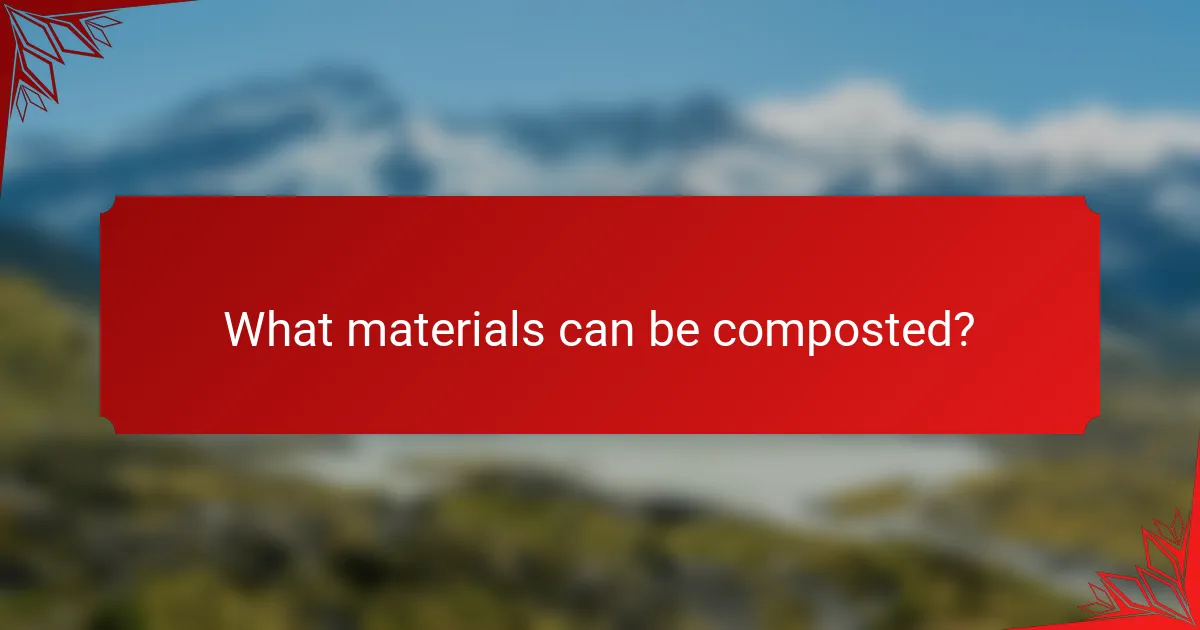
What materials can be composted?
Composting involves breaking down organic materials into nutrient-rich soil amendments. Common compostable materials include kitchen scraps, yard waste, and certain paper products, all of which contribute to reducing landfill waste and enhancing soil health.
Kitchen scraps
Kitchen scraps are a significant component of composting, as they include a variety of organic waste generated during meal preparation. Common items include fruit and vegetable peels, coffee grounds, eggshells, and stale bread. Avoid adding meat, dairy, and oily foods, as they can attract pests and create odors.
To effectively compost kitchen scraps, store them in a designated container with a lid to minimize odors. Aim to maintain a balance between green materials (like scraps) and brown materials (like dried leaves) for optimal decomposition.
Yard waste
Yard waste comprises organic materials collected from gardening and landscaping activities. This includes grass clippings, leaves, branches, and plant trimmings. These materials are rich in carbon and nitrogen, essential for the composting process.
When composting yard waste, chop larger branches and twigs into smaller pieces to accelerate decomposition. Be cautious with diseased plants or invasive weeds, as they may survive the composting process and spread in your garden.
Paper products
Certain paper products can be composted, contributing carbon to the compost pile. Acceptable items include shredded newspaper, cardboard, and paper towels that are free from chemicals and food residues. Avoid glossy paper and those with heavy inks, as they may contain harmful substances.
To ensure effective composting, tear or shred paper products into smaller pieces. This increases surface area and speeds up the breakdown process. Maintain a balanced mix of paper with other compostable materials to achieve optimal results.
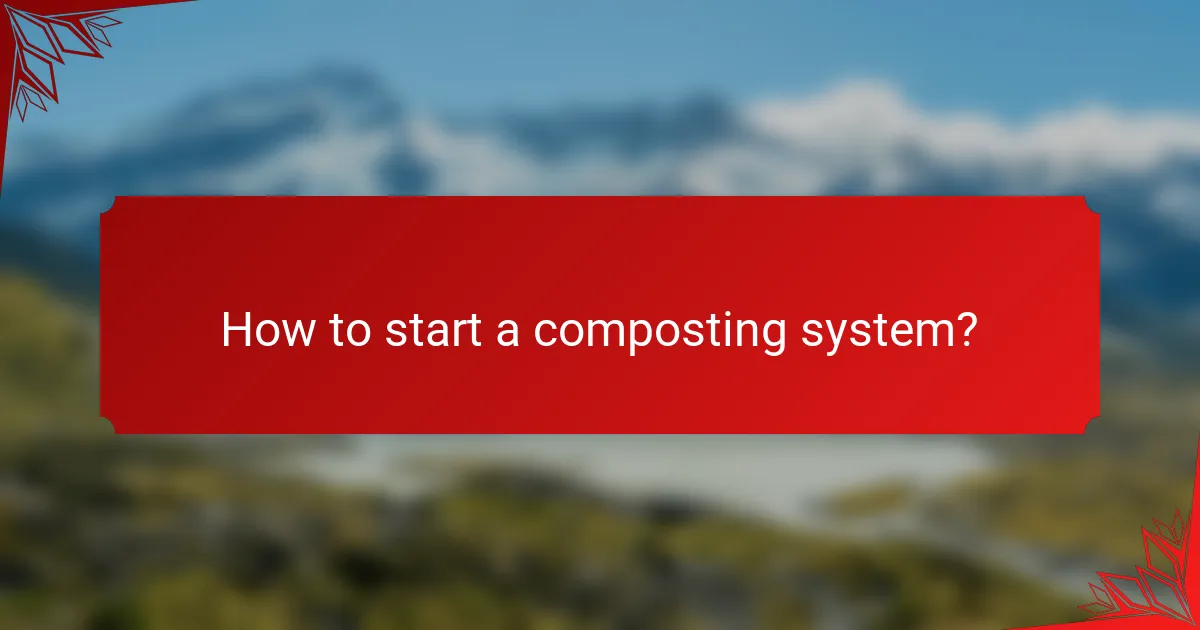
How to start a composting system?
Starting a composting system involves selecting a method, gathering compostable materials, and maintaining the compost pile. This process can significantly reduce waste while enriching soil and promoting sustainable gardening practices.
Choose a composting method
There are several composting methods to consider, including backyard composting, vermicomposting, and bokashi composting. Backyard composting is ideal for larger spaces, while vermicomposting utilizes worms and is suitable for smaller areas.
Evaluate your available space, time commitment, and the volume of waste you generate to choose the best method. For instance, if you have limited outdoor space, vermicomposting may be the most practical option.
Gather compostable materials
Collecting the right compostable materials is crucial for a successful compost pile. Common compostables include fruit and vegetable scraps, coffee grounds, eggshells, grass clippings, and dry leaves.
Avoid adding meat, dairy, and oily foods, as these can attract pests and create odors. Aim for a balanced mix of green materials (nitrogen-rich) and brown materials (carbon-rich) in a roughly 1:3 ratio for optimal decomposition.
Maintain the compost pile
Regular maintenance of the compost pile ensures efficient decomposition. Turn the pile every few weeks to aerate it, which speeds up the breakdown process and prevents odors.
Monitor moisture levels; the compost should be damp but not soggy. If it feels too dry, add water or more green materials. Conversely, if it’s too wet, add brown materials to absorb excess moisture.
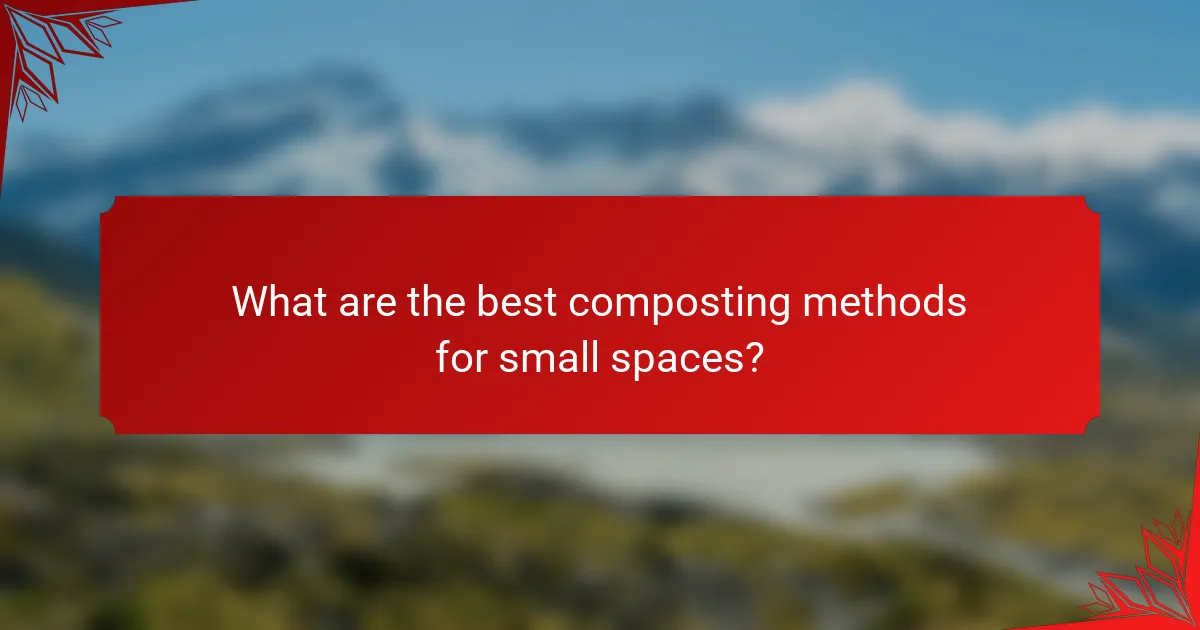
What are the best composting methods for small spaces?
The best composting methods for small spaces include worm composting and using compost bins. These techniques allow for efficient waste reduction while requiring minimal space and resources.
Worm composting
Worm composting, or vermicomposting, utilizes specific worm species to break down organic waste into nutrient-rich compost. This method is ideal for small areas, as it can be done in a compact bin or container.
To start, choose a bin with drainage holes and add bedding material like shredded newspaper or cardboard. Introduce red wigglers or other composting worms, and feed them kitchen scraps such as fruit peels and vegetable trimmings. Keep the bin moist and maintain a temperature between 15-25°C for optimal results.
Avoid overfeeding and ensure the bin is well-ventilated to prevent odors. Regularly harvest the compost, which can be used to enrich houseplants or garden soil.
Compost bins
Compost bins are enclosed containers designed to facilitate the composting process while minimizing odors and pests. They come in various sizes, making them suitable for small spaces like balconies or patios.
When selecting a compost bin, look for one that is easy to access and has good airflow. A typical bin can hold kitchen scraps, yard waste, and other organic materials. Layering green materials (like fruit scraps) with brown materials (like dried leaves) helps maintain balance and speed up decomposition.
Turn the compost regularly to aerate it and monitor moisture levels. Aim for a temperature of around 55-65°C to ensure effective composting. Finished compost can be ready in a few months, providing a valuable resource for gardening.
